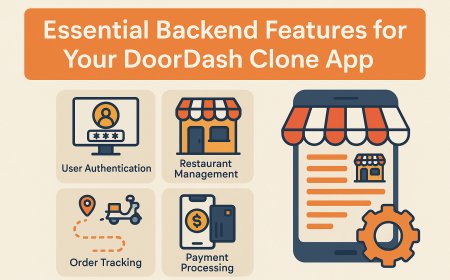How to Grant Privileges in Mysql
How to Grant Privileges in MySQL MySQL is one of the most widely used relational database management systems (RDBMS) in the world, powering everything from small personal websites to enterprise-scale applications. At the heart of its security and operational integrity lies the concept of user privileges. Granting privileges in MySQL determines what actions a user can perform—whether they can read
How to Grant Privileges in MySQL
MySQL is one of the most widely used relational database management systems (RDBMS) in the world, powering everything from small personal websites to enterprise-scale applications. At the heart of its security and operational integrity lies the concept of user privileges. Granting privileges in MySQL determines what actions a user can perform—whether they can read data, modify tables, create databases, or even manage other users. Properly managing these privileges is not just a technical task; it’s a critical component of database security, compliance, and performance optimization.
Incorrect or overly permissive privilege assignments can expose your data to unauthorized access, accidental deletion, or malicious tampering. Conversely, overly restrictive privileges can hinder legitimate workflows and frustrate developers and administrators. Mastering how to grant privileges in MySQL ensures that users have exactly the access they need—and nothing more. This tutorial provides a comprehensive, step-by-step guide to understanding, implementing, and optimizing MySQL privilege management for both beginners and experienced database administrators.
Step-by-Step Guide
Understanding MySQL Privilege System
Before granting any privileges, it’s essential to understand how MySQL organizes access control. MySQL uses a privilege system based on user accounts, each associated with specific permissions that apply at different levels: global, database, table, column, and routine. These permissions are stored in system tables within the mysql database, including user, db, tables_priv, columns_priv, and procs_priv.
When a user attempts an operation, MySQL checks these tables in order of specificity: column-level privileges override table-level, which override database-level, and so on. Global privileges apply to all databases on the server. Understanding this hierarchy is crucial for making precise, secure privilege assignments.
Prerequisites
To grant privileges in MySQL, you must have the following:
- Access to a MySQL server (local or remote)
- A user account with the
GRANT OPTIONprivilege - Administrative access to the MySQL command-line client or a GUI tool like phpMyAdmin or MySQL Workbench
Typically, the root user or a user with superuser privileges can grant privileges. If you’re unsure whether your account has the necessary rights, connect to MySQL and run:
SHOW GRANTS FOR CURRENT_USER;If the output includes GRANT OPTION, you’re ready to proceed.
Step 1: Connect to MySQL
Open your terminal or command prompt and connect to the MySQL server using the command-line client:
mysql -u username -pReplace username with your MySQL username (e.g., root). You will be prompted to enter your password. Once authenticated, you’ll see the MySQL prompt (mysql>), indicating you’re connected and ready to execute commands.
Step 2: View Existing Users
To avoid creating duplicate users or accidentally modifying the wrong account, list all existing users:
SELECT User, Host FROM mysql.user;This query returns a list of all users and the hosts from which they can connect. Note the Host column—it’s critical. A user defined as 'alice'@'localhost' is different from 'alice'@'%' (which allows connections from any host). Always specify the host explicitly to avoid security risks.
Step 3: Create a User (If Needed)
If the user you want to grant privileges to doesn’t exist, create them using the CREATE USER statement:
CREATE USER 'newuser'@'localhost' IDENTIFIED BY 'StrongP@ssw0rd123!';Best practice: Use a strong, complex password. Avoid simple or commonly used passwords. You can also create users without passwords, but this is strongly discouraged in production environments.
If the user needs to connect from any host (e.g., an application server), use:
CREATE USER 'appuser'@'%' IDENTIFIED BY 'SecurePass456!';Be cautious with '%'—it opens the user to connections from any IP address. Only use it if necessary and ensure your MySQL server is behind a firewall or uses SSL encryption.
Step 4: Grant Privileges
The GRANT statement is the primary tool for assigning privileges. Its basic syntax is:
GRANT privilege_type ON database_name.table_name TO 'username'@'host';Here are the most common privilege types:
- SELECT – Read data from tables
- INSERT – Add new rows
- UPDATE – Modify existing data
- DELETE – Remove rows
- CREATE – Create databases or tables
- DROP – Delete databases or tables
- ALTER – Modify table structure
- INDEX – Create or drop indexes
- GRANT OPTION – Allow the user to grant privileges to others
For example, to grant read-only access to a specific database:
GRANT SELECT ON myapp_db.* TO 'readonly_user'@'localhost';To grant full access to a specific table:
GRANT SELECT, INSERT, UPDATE, DELETE ON myapp_db.users TO 'app_user'@'localhost';To grant all privileges on all databases (use with extreme caution):
GRANT ALL PRIVILEGES ON *.* TO 'admin_user'@'localhost' WITH GRANT OPTION;The WITH GRANT OPTION clause allows the user to grant the same privileges to other users. Only trusted administrators should have this option.
Step 5: Apply the Changes
After executing a GRANT statement, MySQL does not always immediately apply the changes to active sessions. To ensure the new privileges take effect, run:
FLUSH PRIVILEGES;This command reloads the privilege tables from disk into memory. While modern MySQL versions often auto-refresh privileges, explicitly running FLUSH PRIVILEGES; is a best practice to eliminate ambiguity.
Step 6: Verify the Privileges
Always confirm that privileges were granted correctly. Use the SHOW GRANTS command:
SHOW GRANTS FOR 'readonly_user'@'localhost';This will output something like:
+-------------------------------------------------+
| Grants for readonly_user@localhost |
+-------------------------------------------------+
| GRANT USAGE ON *.* TO readonly_user@localhost |
| GRANT SELECT ON myapp_db.* TO readonly_user@localhost |
+-------------------------------------------------+
Notice that USAGE is listed—it means the user has no privileges other than connecting. The actual granted permissions follow. This output confirms the assignment worked.
Step 7: Revoke Privileges (If Necessary)
Privileges can be removed using the REVOKE statement. Syntax is identical to GRANT, but reverses the action:
REVOKE INSERT, UPDATE ON myapp_db.users FROM 'app_user'@'localhost';To remove all privileges from a user:
REVOKE ALL PRIVILEGES, GRANT OPTION FROM 'app_user'@'localhost';After revoking, run FLUSH PRIVILEGES; again to ensure changes are applied.
Step 8: Delete a User (Optional)
If a user is no longer needed, remove them entirely:
DROP USER 'olduser'@'localhost';This permanently deletes the user account and all associated privileges. Use this only after confirming no applications or processes depend on the account.
Best Practices
Apply the Principle of Least Privilege
The cornerstone of secure privilege management is the principle of least privilege: users should have only the minimum permissions required to perform their tasks. A developer who only needs to query data should not have DELETE or DROP privileges. A reporting user should be granted SELECT only. This minimizes the blast radius of compromised credentials or accidental errors.
Use Specific Hosts, Not Wildcards
Avoid using 'username'@'%' unless absolutely necessary. Instead, specify exact hostnames or IP addresses:
'app_server'@'192.168.1.10'This prevents unauthorized external access. If your application runs on a cloud server, use its private IP or hostname. For local development, use 'localhost' or '127.0.0.1'.
Never Grant ALL PRIVILEGES Without Justification
Granting ALL PRIVILEGES ON *.* to non-administrative users is a common security misconfiguration. Even if the user is trusted, accidental execution of DROP DATABASE or DELETE FROM users can cause catastrophic data loss. Always grant specific, targeted privileges.
Use Roles for Scalable Management (MySQL 8.0+)
If you’re using MySQL 8.0 or later, leverage roles to simplify privilege management. A role is a named collection of privileges that can be assigned to multiple users. For example:
CREATE ROLE 'reporting_role';
GRANT SELECT ON reports_db.* TO 'reporting_role';
GRANT 'reporting_role' TO 'analyst1'@'localhost', 'analyst2'@'localhost';
Now, if you need to change permissions for all analysts, you modify the role once:
GRANT SELECT ON analytics_db.* TO 'reporting_role';And all users with that role inherit the change automatically. This reduces administrative overhead and ensures consistency.
Enable SSL for Remote Connections
If users connect to MySQL from remote locations, enforce SSL encryption. This prevents password sniffing and man-in-the-middle attacks. You can require SSL for a user like this:
CREATE USER 'remote_user'@'%' IDENTIFIED BY 'SecurePass!' REQUIRE SSL;Or modify an existing user:
ALTER USER 'remote_user'@'%' REQUIRE SSL;Regularly Audit User Privileges
Set a monthly or quarterly audit schedule to review all user accounts and their privileges. Use this query to list all users and their permissions:
SELECT User, Host, Select_priv, Insert_priv, Update_priv, Delete_priv, Create_priv, Drop_priv FROM mysql.user;Look for:
- Users with excessive privileges
- Users with no password
- Users connected from unexpected hosts
- Unused accounts (inactive for over 90 days)
Remove or disable accounts that are no longer needed.
Use Strong Passwords and Rotation
MySQL supports password strength plugins. Enable the validate_password plugin to enforce complexity rules:
INSTALL PLUGIN validate_password SONAME 'validate_password.so';Then configure it:
SET GLOBAL validate_password.length = 12;
SET GLOBAL validate_password.mixed_case_count = 1;
SET GLOBAL validate_password.number_count = 1;
SET GLOBAL validate_password.special_char_count = 1;
Also, implement password rotation policies. Use ALTER USER to change passwords periodically:
ALTER USER 'app_user'@'localhost' IDENTIFIED BY 'NewStrongPass789!';Log and Monitor Privilege Changes
Enable MySQL’s general query log or audit plugin to track who granted or revoked privileges. This provides an audit trail for compliance and security investigations. For production systems, use MySQL Enterprise Audit or third-party tools like Percona Audit Plugin.
Tools and Resources
MySQL Command-Line Client
The native mysql client is the most reliable and universally available tool for privilege management. It’s lightweight, fast, and doesn’t rely on third-party dependencies. Every MySQL installation includes it. Use it for scripting, automation, and critical operations.
MySQL Workbench
MySQL Workbench is a powerful graphical tool for database design and administration. Its “Users and Privileges” section provides a visual interface to create users, assign roles, and manage permissions without writing SQL. It’s ideal for teams unfamiliar with SQL syntax or for quick visual audits.
phpMyAdmin
phpMyAdmin is a web-based interface commonly used in shared hosting environments. It includes a user management panel where privileges can be granted via checkboxes. While convenient, it’s less secure than the command line and should be protected with strong authentication and HTTPS.
Adminer
Adminer is a lightweight, single-file alternative to phpMyAdmin. It supports MySQL, PostgreSQL, SQLite, and more. Its minimal footprint makes it harder to exploit and ideal for temporary administrative access.
Percona Toolkit
Percona Toolkit includes utilities like pt-show-grants, which generates GRANT statements for all users on a server. This is invaluable for backing up privilege configurations or migrating users between servers.
pt-show-grants --host=localhost --user=root --password=secretMySQL Enterprise Monitor
For enterprise environments, MySQL Enterprise Monitor provides real-time monitoring, alerting, and automated audit reports on user privileges. It highlights users with excessive permissions and recommends remediation steps.
Documentation and Learning Resources
- MySQL Official Privilege System Documentation
- GRANT Syntax Reference
- MySQL Roles (8.0+)
- Books: “High Performance MySQL” by Baron Schwartz, “MySQL Cookbook” by Paul DuBois
Real Examples
Example 1: E-commerce Application User
You’re managing a MySQL database for an online store with tables: products, orders, customers, and inventory.
You need to create a user for the backend application that:
- Can read from all tables
- Can insert new orders
- Can update inventory quantities
- Cannot delete anything
Steps:
CREATE USER 'ecommerce_app'@'192.168.1.50' IDENTIFIED BY 'EcomApp2024!';
GRANT SELECT ON store_db.* TO 'ecommerce_app'@'192.168.1.50';
GRANT INSERT ON store_db.orders TO 'ecommerce_app'@'192.168.1.50';
GRANT UPDATE ON store_db.inventory TO 'ecommerce_app'@'192.168.1.50';
FLUSH PRIVILEGES;
Verification:
SHOW GRANTS FOR 'ecommerce_app'@'192.168.1.50';Output confirms only the intended privileges are granted. No DELETE or DROP permissions exist.
Example 2: Data Analyst with Read-Only Access
A data analyst needs to run reports on sales data but must not modify any data. You create a role for consistency across multiple analysts:
CREATE ROLE 'analyst_role';
GRANT SELECT ON sales_db.sales, sales_db.customers, sales_db.products TO 'analyst_role';
CREATE USER 'analyst_jane'@'localhost' IDENTIFIED BY 'AnalystPass!2024';
GRANT 'analyst_role' TO 'analyst_jane'@'localhost';
SET DEFAULT ROLE 'analyst_role' TO 'analyst_jane'@'localhost';
Now, if you need to add another analyst:
CREATE USER 'analyst_mike'@'localhost' IDENTIFIED BY 'AnalystPass!2024';
GRANT 'analyst_role' TO 'analyst_mike'@'localhost';
SET DEFAULT ROLE 'analyst_role' TO 'analyst_mike'@'localhost';
Any future changes to the role (e.g., adding a new table) are automatically inherited by all users assigned to it.
Example 3: Database Backup User
You need a user for automated nightly backups using mysqldump. This user only needs to read data, not write or modify:
CREATE USER 'backup_user'@'localhost' IDENTIFIED BY 'BackupPass!2024';
GRANT SELECT, LOCK TABLES, SHOW VIEW ON *.* TO 'backup_user'@'localhost';
FLUSH PRIVILEGES;
Why LOCK TABLES? Because mysqldump uses table locks to ensure data consistency during backup. Without this privilege, the dump may fail or return inconsistent results.
Example 4: Revoking Dangerous Privileges
You discover a developer account with ALL PRIVILEGES on a production database. This is a security risk. You correct it:
REVOKE ALL PRIVILEGES, GRANT OPTION ON *.* FROM 'dev_user'@'192.168.1.100';
GRANT SELECT, INSERT, UPDATE, DELETE ON dev_db.* TO 'dev_user'@'192.168.1.100';
FLUSH PRIVILEGES;
You then document the change and notify the developer of the new access scope.
FAQs
Can I grant privileges without restarting MySQL?
Yes. MySQL dynamically loads privilege changes from its system tables. Running FLUSH PRIVILEGES; ensures the changes are applied to the running server. A restart is never required for privilege changes.
What happens if I grant privileges to a user that doesn’t exist?
MySQL will create the user automatically if you use GRANT without first creating the user. However, this is not recommended. Always use CREATE USER first for clarity, control, and security.
How do I see what privileges a user has on a specific table?
Use SHOW GRANTS FOR 'user'@'host'; to see all privileges. To see table-specific grants, query the tables_priv table directly:
SELECT * FROM mysql.tables_priv WHERE User = 'username' AND Host = 'host' AND Table_name = 'tablename';Can I grant privileges to a group of users at once?
Not directly. But in MySQL 8.0+, you can use roles to assign the same set of privileges to multiple users with a single command. For older versions, you must execute the GRANT statement for each user individually.
What is the difference between USAGE and no privileges?
USAGE means the user can connect to the server but has no database-level permissions. It’s essentially a “blank” account. Some tools display USAGE as the default when no other privileges are assigned.
Do I need to grant privileges on each table individually?
No. You can use wildcards. mydb.* grants privileges on all tables in mydb. *.* grants global privileges. Be cautious with wildcards—they can grant more than intended.
How do I restrict a user to only execute stored procedures?
Grant the EXECUTE privilege on the specific procedure:
GRANT EXECUTE ON PROCEDURE mydb.get_user_count TO 'report_user'@'localhost';Can I grant privileges to the root user?
Root already has all privileges by default. You cannot grant more. However, you can revoke privileges from root (though this is not recommended and can break system functionality).
What if I forget the root password?
If you lose root access, restart MySQL with the --skip-grant-tables option to bypass authentication, then reset the password. This requires server access and should only be done in emergencies.
Are privileges inherited across databases?
No. Privileges are not inherited. A user granted access to db1 has no access to db2 unless explicitly granted. This isolation is intentional for security.
Conclusion
Granting privileges in MySQL is a fundamental skill that directly impacts the security, reliability, and maintainability of your database systems. Whether you’re managing a small personal project or a large-scale enterprise application, the way you assign access rights determines how well your data is protected.
This guide has walked you through the complete lifecycle of privilege management: from understanding the privilege hierarchy and creating users, to applying granular permissions, leveraging roles, auditing access, and using tools effectively. We’ve seen real-world examples that illustrate how to apply the principle of least privilege in practical scenarios, and addressed common questions that arise during implementation.
Remember: privilege management is not a one-time setup. It’s an ongoing process. Regular audits, strict password policies, role-based access control, and monitoring are essential to maintaining a secure environment. Avoid the temptation of convenience—granting broad access may save time today but can cost you dearly tomorrow.
As your systems grow, so too should your approach to access control. Embrace automation, documentation, and standardization. Use roles where possible. Log changes. Review permissions quarterly. Treat each privilege assignment as a security decision—not just a technical one.
Mastering how to grant privileges in MySQL is not just about writing SQL commands. It’s about cultivating a mindset of security-first administration. When done correctly, your database becomes not only functional but also resilient, trustworthy, and aligned with industry best practices.





































